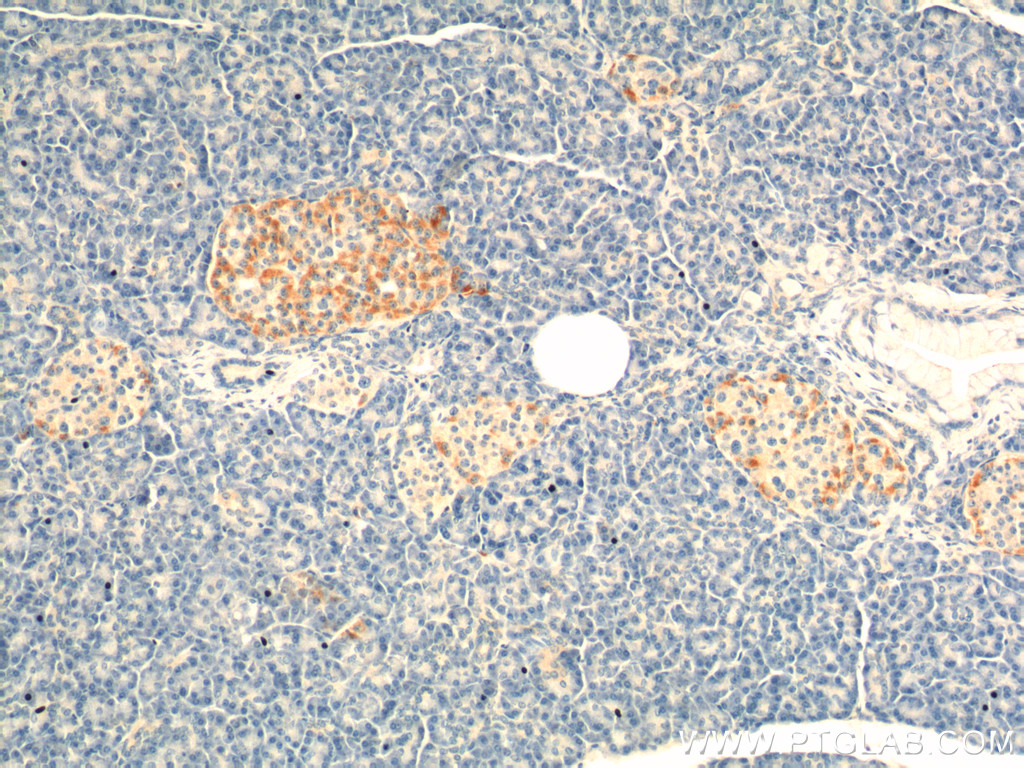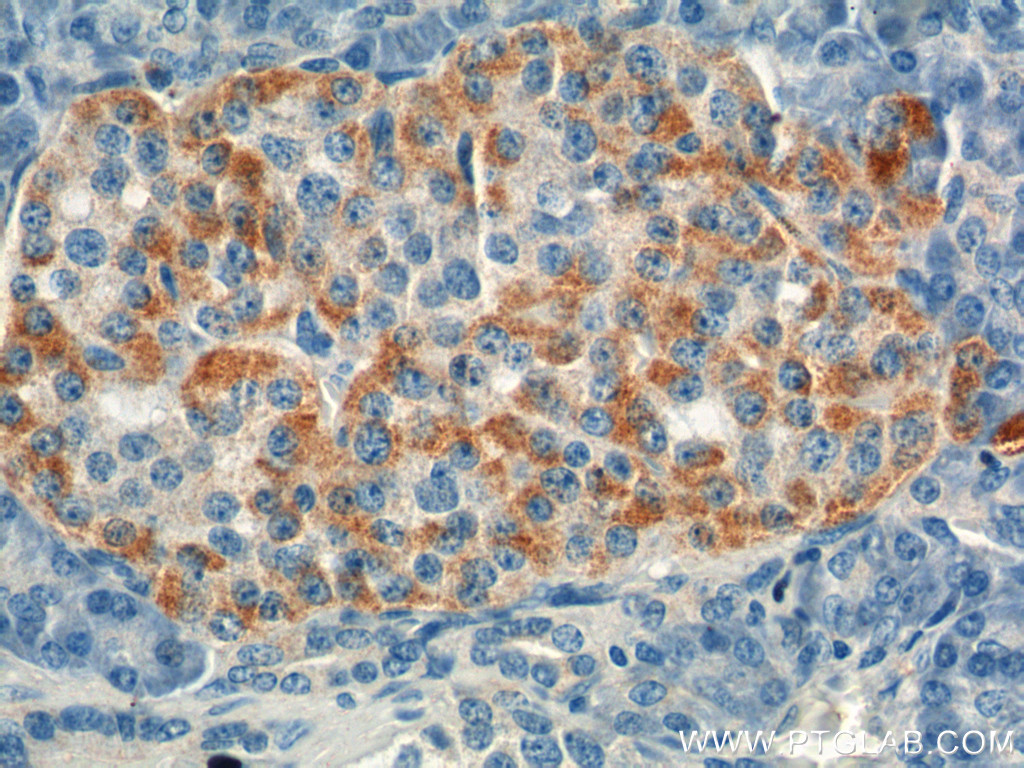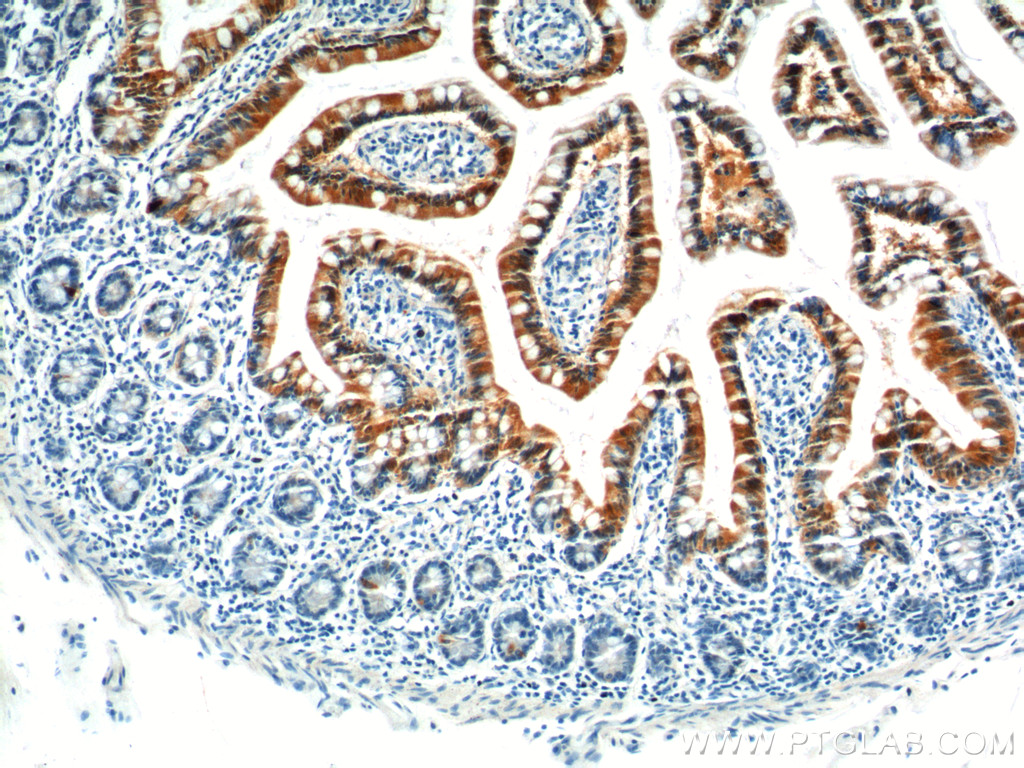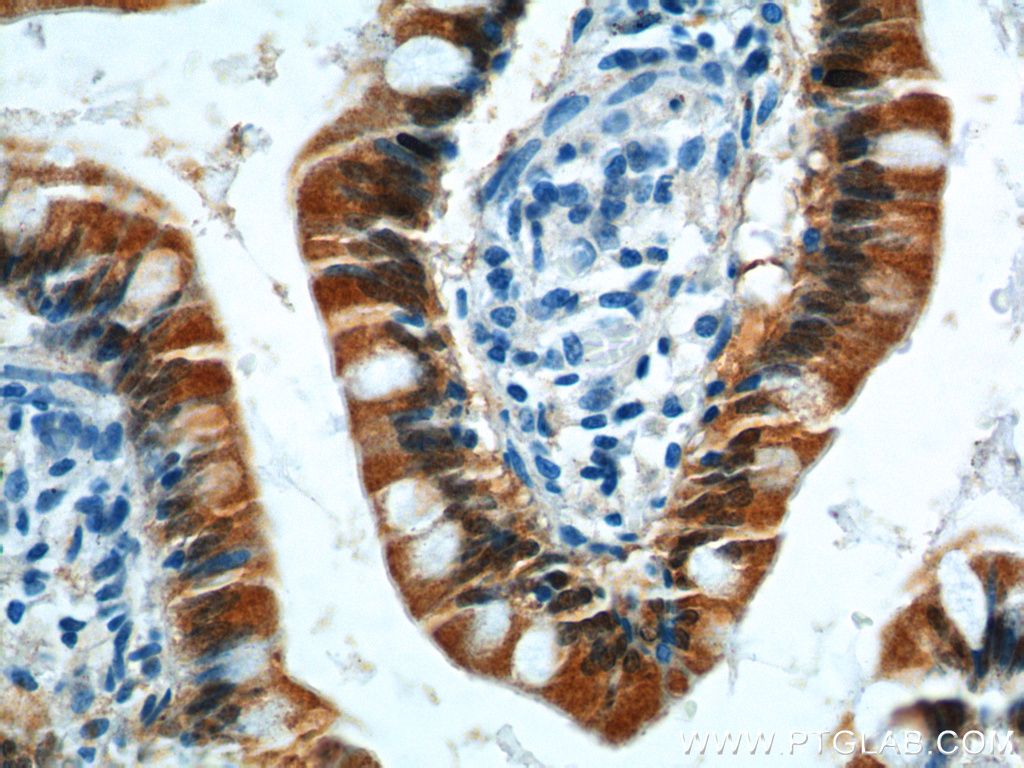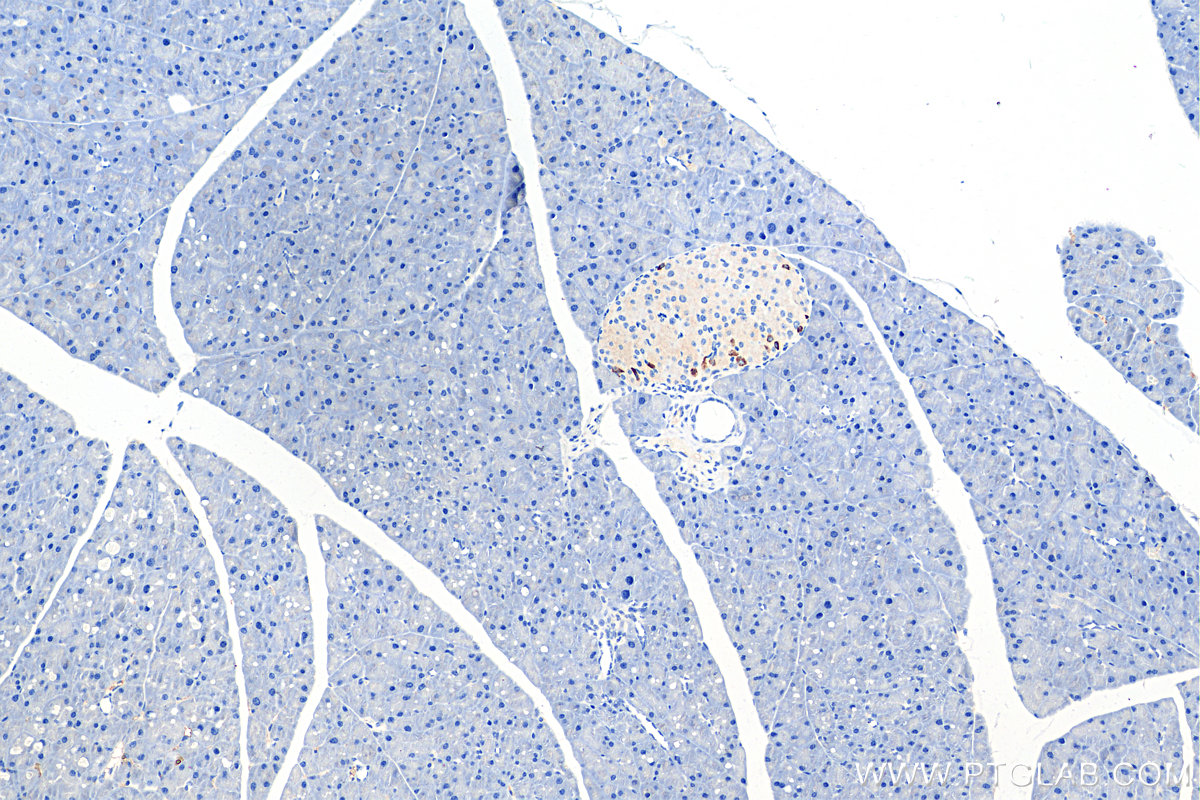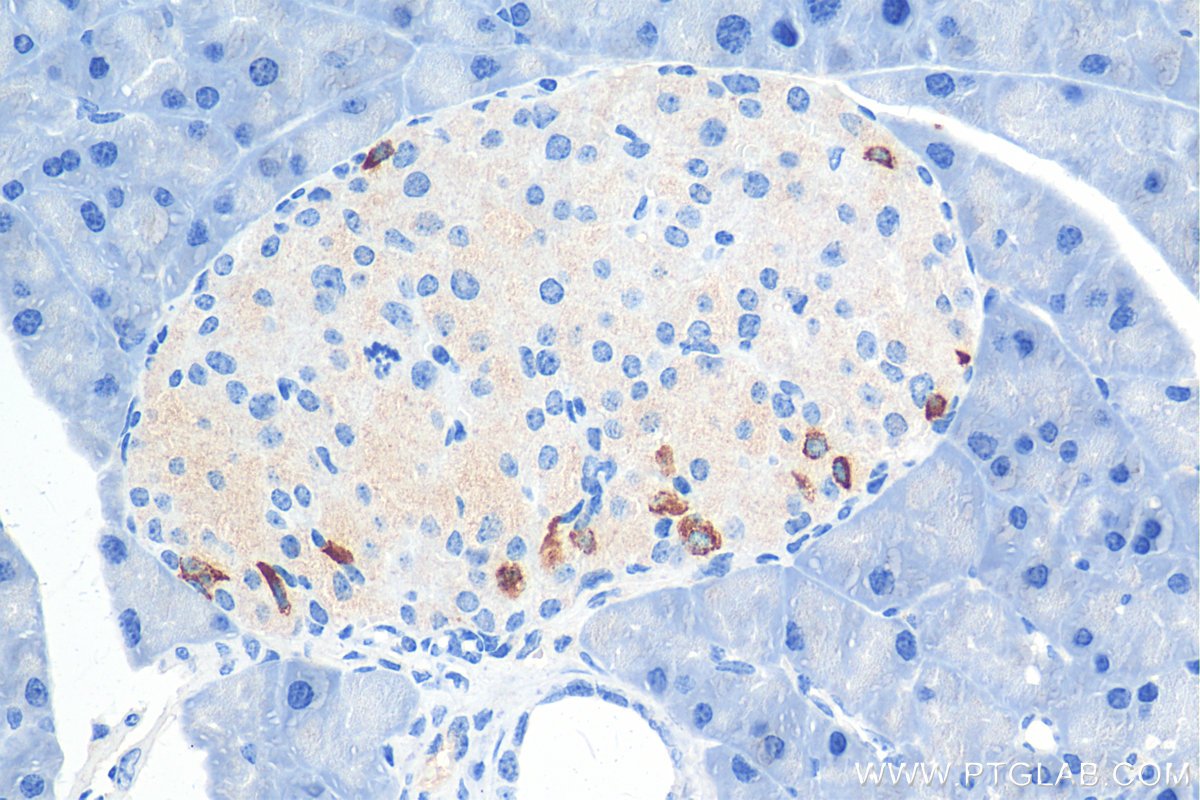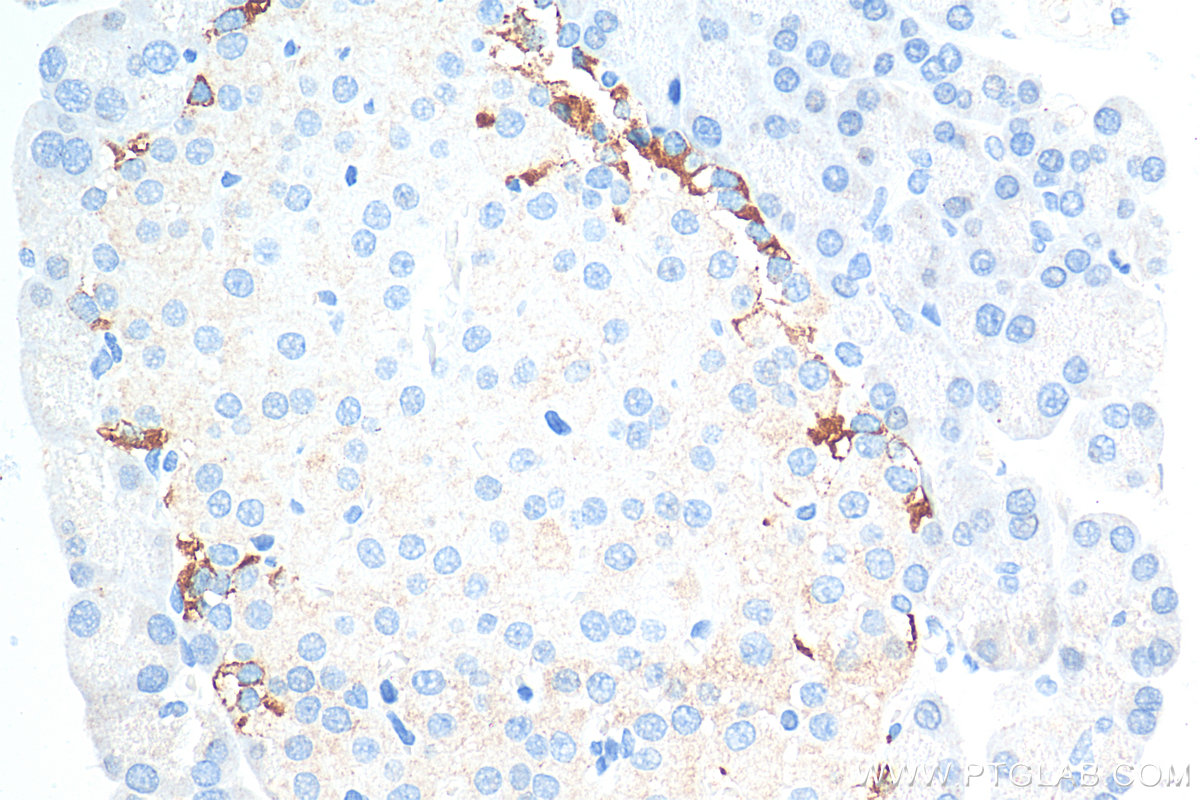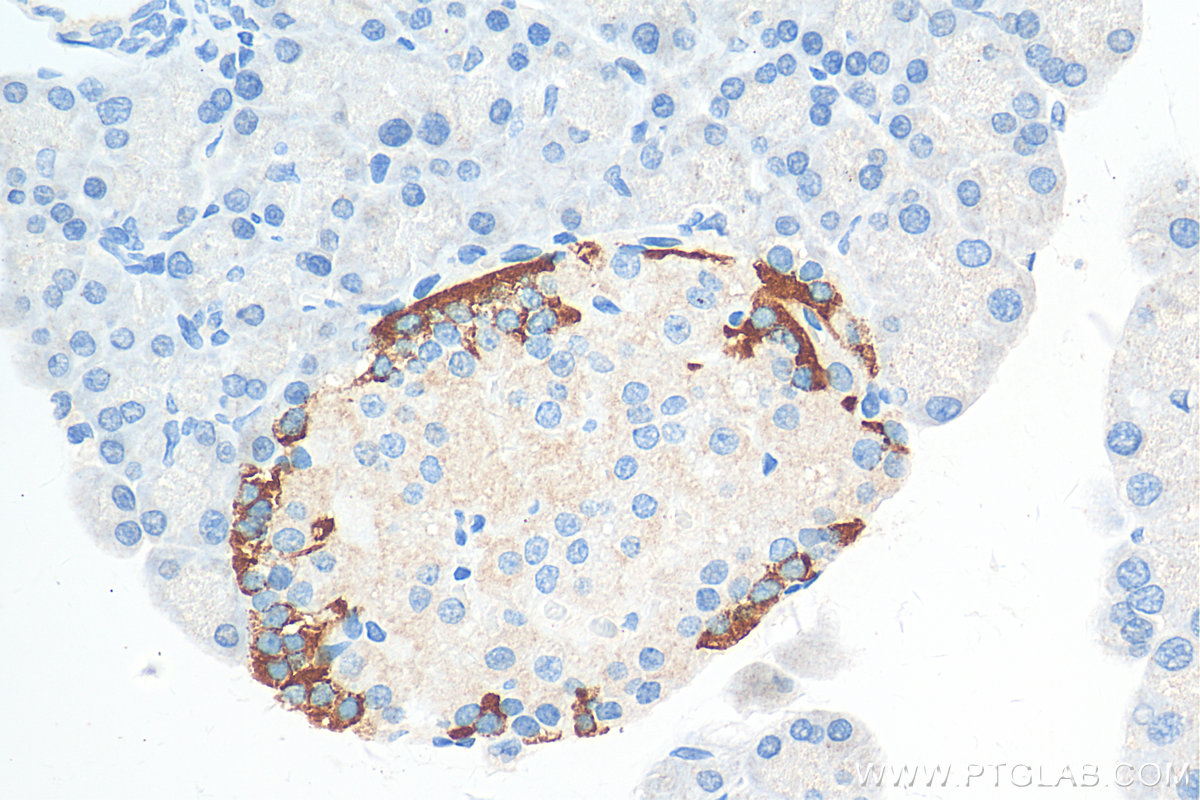GIP Polyclonal antibody
GIP Polyclonal Antibody for IHC, ELISA
Host / Isotype
Rabbit / IgG
Reactivity
human, rat, mouse
Applications
IHC, ELISA
Conjugate
Unconjugated
验证数据展示
经过测试的应用
| Positive IHC detected in | human pancreas tissue, rat pancreas tissue, mouse pancreas tissue, human small intestine tissue Note: suggested antigen retrieval with TE buffer pH 9.0; (*) Alternatively, antigen retrieval may be performed with citrate buffer pH 6.0 |
推荐稀释比
| Application | Dilution |
|---|---|
| Immunohistochemistry (IHC) | IHC : 1:50-1:500 |
| It is recommended that this reagent should be titrated in each testing system to obtain optimal results. | |
| Sample-dependent, Check data in validation data gallery. | |
产品信息
The immunogen of 18034-1-AP is GIP Fusion Protein expressed in E. coli.
| Tested Applications | IHC, ELISA |
| Tested Reactivity | human, rat, mouse |
| Immunogen | GIP fusion protein Ag12634 种属同源性预测 |
| Host / Isotype | Rabbit / IgG |
| Class | Polyclonal |
| Type | Antibody |
| Full Name | gastric inhibitory polypeptide |
| Synonyms | gastric inhibitory polypeptide, GIP |
| Calculated Molecular Weight | 153 aa, 17 kDa |
| GenBank Accession Number | BC069663 |
| Gene Symbol | GIP |
| Gene ID (NCBI) | 2695 |
| RRID | AB_2878484 |
| Conjugate | Unconjugated |
| Form | Liquid |
| Purification Method | Antigen affinity purification |
| UNIPROT ID | P09681 |
| Storage Buffer | PBS with 0.02% sodium azide and 50% glycerol pH 7.3. |
| Storage Conditions | Store at -20°C. Stable for one year after shipment. Aliquoting is unnecessary for -20oC storage. |
背景介绍
实验方案
| Product Specific Protocols | |
|---|---|
| IHC protocol for GIP antibody 18034-1-AP | Download protocol |
| Standard Protocols | |
|---|---|
| Click here to view our Standard Protocols |
